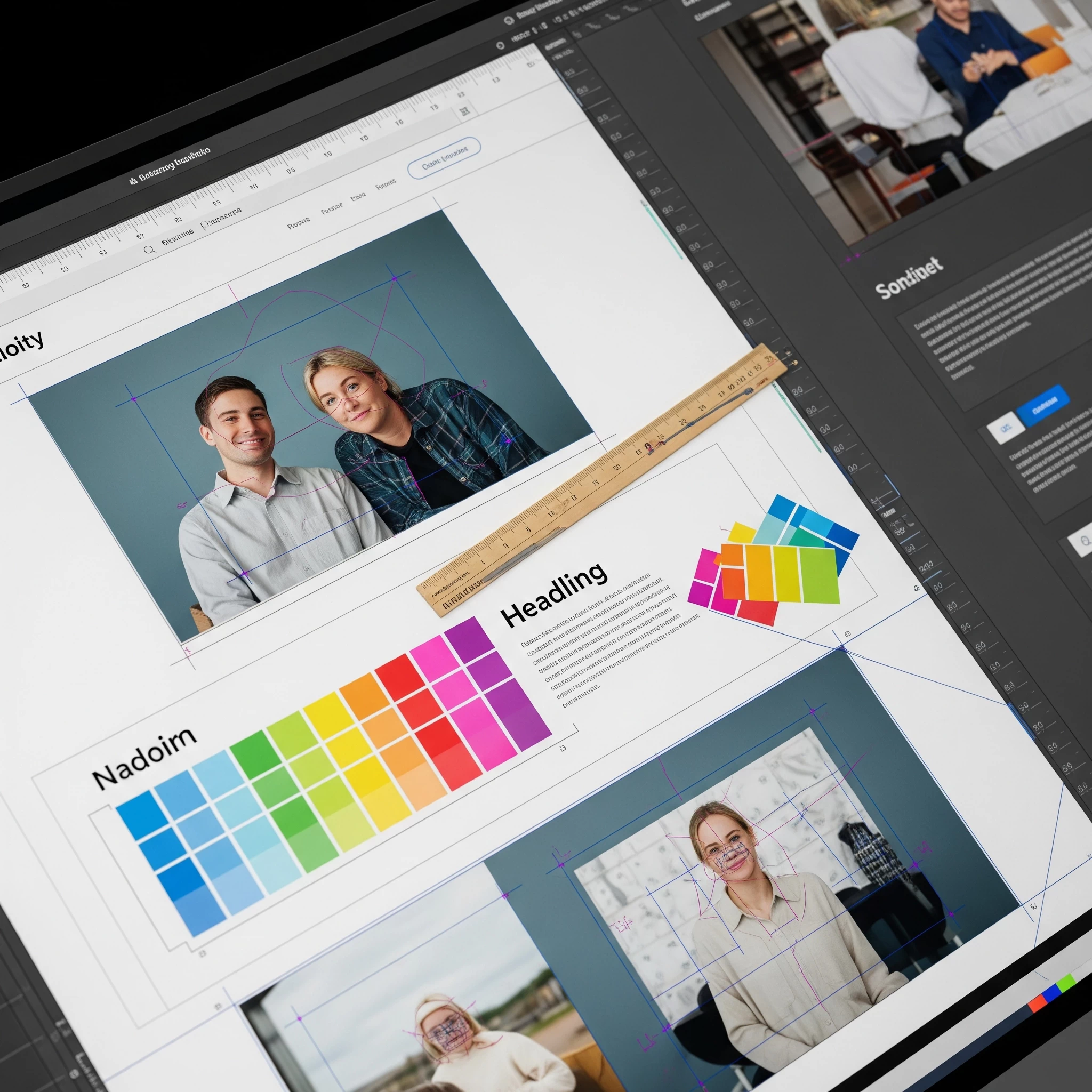- 1. Understanding UK user expectations
- 2. The importance of mobile-first website design
- 3. Creating a user-friendly navigation
- 4. Visual appeal and branding
- 5. Optimising website design for conversions
- 6. Ensuring accessibility in website design
- 7. The role of content in driving conversions
- 8. Considering local SEO in website design for UK businesses
- 9. Further reading
In today’s digital landscape, your website is often the first impression a potential customer has of your business. So, it needs to be more than just visually appealing; it must also be effective at converting visitors into customers. This article explores website design best practices specifically tailored for the UK market. It has a strong focus on user experience (UX) and conversion rate optimisation (CRO).
Understanding UK user expectations
Understanding the nuances of your target audience is crucial for effective website design. UK users, like those in many developed nations, expect a seamless and intuitive online experience. They value clarity, efficiency, and trustworthiness. If you want to retain your visitors and convert them into customers, fast loading times are a necessity. Furthermore, clear calls to action and easy-to-find contact information are essential for driving conversions. Building trust through professional design and clear communication is also vital, as is ensuring data privacy and security.
The importance of mobile-first website design
Mobile devices now account for a significant portion of web traffic. For this reason, a mobile-first approach to website design is not optional; it’s a fundamental requirement for success. This means designing for the smallest screens first, then progressively enhancing the experience for larger devices. A responsive design ensures your website adapts flawlessly to any screen size, providing an optimal viewing and interaction experience for all users. Also, optimising content for slow data speeds and reduced connections is equally important. This approach significantly improves user satisfaction and, consequently, conversion rates.
Effective navigation is the backbone of a user-friendly website. Visitors should be able to find what they are looking for quickly and easily. This involves using a logical structure for your content and clear, concise menu labels. Consider using breadcrumbs to help users understand their location within the site. A well-organised navigation system reduces frustration and encourages exploration, which can lead to increased engagement and conversions. After all, at best a frustrated user is a lost opportunity; at worst, it’s a lost sale.
Visual appeal and branding
Visual appeal plays a significant role in how users perceive your brand and website. A professional and consistent design reinforces your brand identity and builds credibility. This includes using high-quality images and videos that are relevant to your content. Your colour palette, typography, and overall visual style should align with your brand guidelines, creating a cohesive and memorable experience. However, remember that aesthetics should never compromise functionality or load times. And your design and branding should always comply with accessibility standards.
Optimising website design for conversions
Conversion Rate Optimisation (CRO) attempts to improve website design to increase the percentage of visitors who complete a desired action. For instance, this could be making a purchase, filling out a form, or signing up for a newsletter. Key elements of CRO include clear and compelling calls to action (CTAs), streamlined forms, and persuasive copy. A/B testing different elements can help you identify what resonates best with your audience. Moreover, analysing user behaviour through analytics tools provides valuable insights for continuous improvement. Ultimately, effective website design is about achieving your business goals so finding what best suits your audience is critical. Often it isn’t just a matter of putting together what everyone else is doing. Usually finding an optimal design involves iterations and revisions, tests, and repeats.
Ensuring accessibility in website design
Beyond aesthetics and functionality, a truly effective website design in the UK market must also prioritise accessibility. This means designing your website so that everyone, including people with disabilities, can use it easily. Implementing features like image ALT text, colour contrast, and keyboard navigation enables a wider audience to engage with your content. Furthermore, accessible website design is not only good practice but also a requirement under the UK’s Equality Act 2010. By making your website accessible, you broaden your reach and demonstrate a commitment to inclusivity. That will enhance your brand reputation and supports strong conversion rates.
The role of content in driving conversions
While website design provides the framework, the content fills it and drives conversions. High-quality, relevant, and engaging content is influential in attracting and retaining visitors. This includes compelling product descriptions, informative articles, and clear service explanations. The content should speak directly to your target audience’s needs and pain points, offering solutions and building trust. Moreover, strategically placed keywords and calls to action within your content guide users towards desired outcomes. Therefore, effective content strategy is an integral part of successful website design. This also positively impacts your SEO efforts, helping more people find your website in the first place.
Considering local SEO in website design for UK businesses
For firms targeting the UK market, local SEO is an important aspect of website design and their overall online strategy. This involves optimising your website to rank higher in local search results. Key elements include listing your business on Google My Business, incorporating location-specific keywords, and encouraging local reviews. It’s useful to make sure your contact details are easy to find, accessible, and consistent across all platforms. By focusing on local SEO, you can connect with customers in your local area, driving both online and offline sales. This thoughtful approach enhances your overall web presence and strengthens your market position.
Want a website that drives results? Contact Redcentaur for a design consultation.
Further reading
Website development UK: A complete guide for businesses
5 key steps to perfect website planning
Choosing the right web developer in the UK
See our website design case studies.





